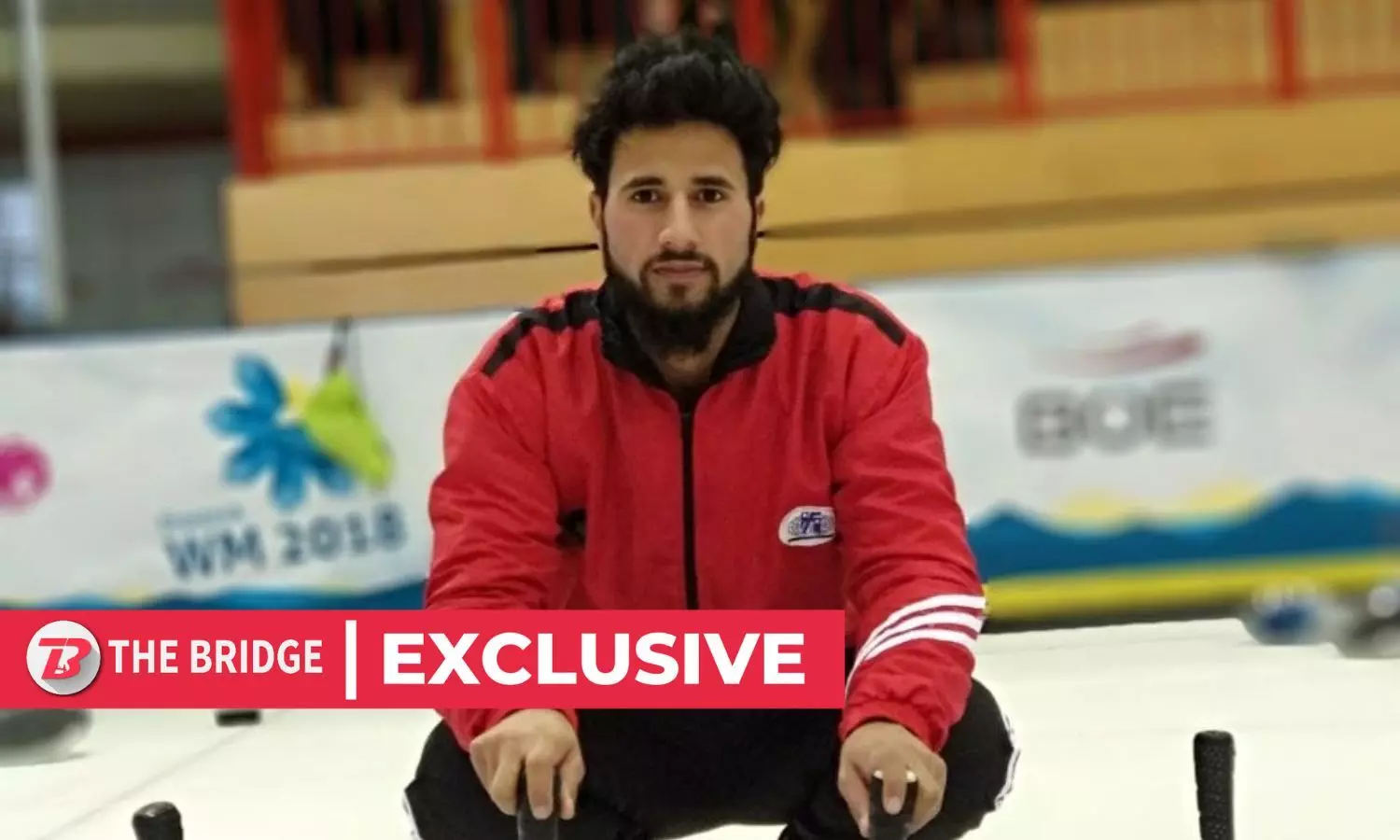Winter Sports
Aadil Manzoor Peer: Carving a path in Ice Stock
Indian athlete Aadil Manzoor Peer transitioned from rugby to ice stock, overcoming financial and infrastructural challenges to win international accolades.

For Aadil Manzoor Peer, sports have always been an integral part of life. Hailing from the picturesque yet conflict-stricken region of Kashmir, Aadil initially made a name for himself in rugby.
His athleticism and competitive spirit helped him excel in the sport, but in 2012, an unexpected opportunity changed his path. Ice Stock, a winter sport barely known in India, entered his life.
When Ice Stock was introduced in India, Aadil was drawn to the sport's technical aspects and the sheer challenge of excelling in an unfamiliar discipline.
It wasn’t long before he transitioned from rugby to Ice Stock, embracing a new journey that would see him represent India on the international stage.
Adapting to a winter sport in a country with minimal infrastructure for such disciplines was no easy feat. Aadil faced immense challenges, from the lack of proper facilities to financial struggles that often made training and traveling to international events difficult.
Unlike traditional Indian sports, Ice Stock lacked recognition, making sponsorship and governmental support hard to come by.
Despite these hurdles, Aadil remained determined. His hard work bore fruit when he competed in multiple international tournaments, bringing home medals and proving that India could make its mark in winter sports.
In an exclusive interview with The Bridge, Aadil opened up about how it wasn’t long before he transitioned from rugby to Ice Stock, embracing a new journey that would see him represent India on the international stage.
Excerpts from the interview:
What made you transition from Rugby to Ice Stock?
I started with Rugby in 2007, but destiny had other plans. In 2012, Ice Stock was introduced in India at Gulmarg by the Indian Ice Stock Federation.
When I saw the game in action for the first time, something clicked—I felt an instant connection. What started as curiosity soon turned into commitment.
I trained hard, played at the national level, and eventually made my international debut in 2018 at the World Championship in Austria. From there, I competed in Germany, Italy, China, and Austria again in 2025.
Coming from Kashmir, what difficulties did you face in pursuing winter sports professionally?
Kashmir has the perfect climate for winter sports, but back in 2012, pursuing a career in it was a huge challenge.
Limited road connectivity, lack of equipment, and very few competitions made it difficult for athletes like me.
Things have improved with initiatives like Khelo India Winter Games, where I won 5 golds, 2 silvers, and a bronze. But challenges remain—Ice Stock equipment is expensive and must be imported from Europe, making the sport financially demanding.
How do you manage the high costs of competing internationally?
Ice Stock isn't just about skill and passion—it requires significant financial resources.
A basic Ice Stock kit costs ₹80,000 to ₹1 lakh, and travel and tournament expenses go into lakhs.
Sponsorship is scarce because the sport is still unknown in India. Some athletes get sponsors, but that only covers 20-30% of expenses. Many of us fund our own journeys purely for the pride of representing India.
You grew up in a border village in Kashmir. How did you overcome challenges and stay focused on your sport?
I come from Halmatpora, Kupwara, a border village in North Kashmir, where distractions and challenges were constant.
But my parents and coach kept me on the right path. My father runs an agency, my mother manages our home, and my siblings have always supported me.
Despite geographical and logistical challenges, I would travel to Srinagar for training. Playing Ice Stock in the summer format (on tarmac) has helped me train year-round despite seasonal limitations.
How did it feel to win bronze at the 2025 World Championship in Austria?
We aimed for gold or silver because we had the potential, but a minor injury and lower-quality equipment held us back.
Still, our performance shocked the world—no one expected India to compete at that level.
Hearing the crowd chant "India, India" was unforgettable. It was a historic achievement that proved India belongs on the world stage in Ice Stock.
Does India have year-round Ice Stock training facilities?
No, and that’s a major problem. The only natural ice rink is in Gulmarg, which lasts just about 2.5 months.
Delhi has an indoor ice hall, but renting it costs ₹1-2.5 lakh per day, making it nearly impossible for us to train regularly.
European teams train for 6-7 months on competition-standard ice, while we train for just 1-2 months.
To compete with the best, we need a proper training infrastructure in India.
What are your short-term and long-term goals in Ice Stock?
In the short term, I am preparing for the upcoming Summer Cup. My long-term goal is to compete in the 2030 Olympics, where Ice Stock has been included. If India qualifies, we will aim for a medal.
How can India match global Ice Stock standards?
"We need access to better training. The top athletes and coaches are in Germany, Austria, and Italy, where the sport is at its peak. European teams train on real ice for 6–7 months a year, while we get barely 2 months. Quality equipment, sponsorship, and training facilities make a huge difference. Without them, we’ll always be at a disadvantage."
What message do you have for young athletes, especially those interested in Ice Stock?
Whatever sport you choose, we are here to help you. You grow only when you help others, and we want India to grow in sports like Ice Stock.
When we compete internationally, people assume Indians don’t know this sport because of our climate, but we prove them wrong by winning medals.
The youth has immense potential. Stay away from distractions and bad influences, work hard, and chase your dreams.

